For many dancers, New York City is the city of dreams. It’s the home of Broadway, of Lincoln Center, of the Radio City Rockettes, and of numerous opportunities and artists. Making the move to NYC, however, is a big decision. It’s a choice of taking chances, working hard amongst stiff competition and giving it your all in order to make ends meet. NYC is not for every dancer, but it does often offer great things to those who choose it.
Here, Dance Informa speaks with some NYC dancers on their decision to make the move. Together, they offer 10 reasons why or why not NYC may be a good fit for you.

Emily Bufferd moved to NYC from Highland, Florida, to pursue dance opportunities. Photo by Jaqi Medlock.
1. You are a “go-getter”.
Dancers tend to already have a lot of passion and drive, but NYC, a city that itself is always on the go, requires much motivation and determination. And hard work.
“I joke that I play for team ‘no days off’,” says Emily Bufferd, producer of The Young Choreographers Festival and who teaches at the Joffrey Ballet School, Broadway Dance Center and Peridance Capezio Center. “You do have to hustle here. Every opportunity is an opportunity, no matter what.”
Bufferd moved to NYC from Highland, Florida, at the age of 18, in order to further her dance education and experiences. “You are very likely going to start at the bottom, and that’s okay,” she adds. “I think sometimes how hard you actually have to work can be shocking to a dancer who has just moved here. I recently choreographed a piece that was about how my friend and I used to cry on my couch about how we couldn’t get anyone to give us jobs. We literally showed work in shows that were in church basements for, like, four people and just kept doing it in the hopes of more and better, which eventually came. You just have to keep working at it.”
2. You have “thick skin” and can put up with the large amount of competition.
Since so many dancers do come to NYC for dance, and since only so many jobs exist, that means numerous people are vying for the same gig or position. Competition can be stiff. It’s great to keep auditioning and putting yourself out there, but you can’t get discouraged if you receive a few “no”s before a “yes” comes along.
“They really mean it when they say you have to have thick skin to be in this business,” says J Ryan Carroll, a freelance dancer who moved to NYC 13 years ago on an invitation to study with the late David Howard. “I’ll never forget the words of one of my first ballet teachers, Haynes Owens. He said, ‘Be a sponge, Ryan. Soak up everything!’ And I think there needs to be a happy medium between being a sponge and having thick skin. You have to be willing to take the bad and the good and accept that one informs the other, while trying to not take it personally. And that’s not an easy thing to do!”
“There are fewer jobs in the city now as well, and it seems like dance might be in a down period with the shortening of seasons and closing of companies,” adds Billy Blanken, a freelance dancer from Springfield, Ohio, who moved to NYC in 2005 to study at the Joffrey Ballet School.
Bufferd adds, “There are a lot of dancers here, which is wonderful, but that also means that for every one job available, there are probably a minimum of 50 other girls who want it, too, and they are just as qualified as you are for it.”
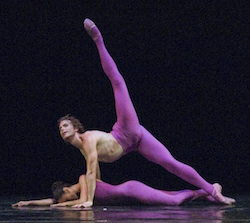
J Ryan Carroll in Jose Pares’ ‘Poeme’. Photo courtesy of Carroll.
3. You are willing to be flexible (and not just in your body).
Dancers who move to NYC should have some sort of vision of what they want in their dance career and the will to make it happen. That said, however, your “plan” needs flexibility. Perhaps you don’t get into your dream company but instead audition for a choreographer whose work you end up finding artistically inspiring anyway. Opportunities can also lead to opportunities, so really you never know. What matters is your happiness and the fact that you’re doing what you love in NYC.
“New York is a wonderful concrete jungle full of many avenues,” Carroll says. “It’s easy to lose sight of your vision. But that being said, you also have to be willing to be honest with that vision and know that it might take on a different shape. And that’s okay, too!”
Being “flexible” also means realizing that sometimes you need to pick up a “side job” between gigs or have other work (it can still be dance-related, such as teaching) to supplement your dancing income.
“You most often have to work more than one job to be able to pay rent and eat,” says Therese Miyoshi Wendler, a dancer who was raised in Phoenix, Arizona, and moved to NYC 13 years ago. “In the beginning, many dancers work a non-dance job and a dance job. So you have to be able to juggle your schedule to take class, to work and to audition and find more work.”
4. You dream of being on Broadway or being a Radio City Rockette.
There are other places you can live and have a successful dance career, but there are certain jobs that are only offered in the Big Apple. If you want to land a gig dancing on Broadway or dance with the Radio City Rockettes, then NYC is the place to be.
Of course, there are smaller dance companies and concert dance in NYC as well. And many out-of-town companies come through NYC on their audition tour, so opportunities constantly arise.
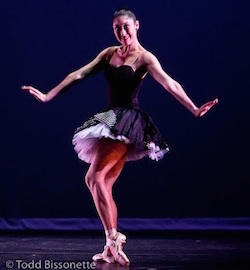
Therese Wendler, pictured here in Rebecca Kelly’s ‘La Belle and Le Bad Boy’. Photo by Todd Bissonette.
5. You are prepared for overcrowding.
There are approximately 8.5 million people in the 305 square miles of NYC. That means that not only will you be competing for a dance job, but also a seat on the subway, an apartment, a table at a coffee shop. Being around many diverse people can of course be inspiring and interesting, but you have to be ready for the city’s overcrowding if you make the move.
“There are certainly cities easier to live in than New York,” Blanken admits. “Adjusting to the city can be very difficult. The housing market is very tough and there are countless scams and underhanded dealings that happen, so one must be very careful.”
6. You want to take advantage of all the studios, classes, workshops and auditions…and all the city’s art and culture!
NYC is a mecca of dance opportunities. Every day, at nearly every hour, you can pop into an open dance class at one of the city’s well-known studios, such as Steps on Broadway, Broadway Dance Center and Peridance Capezio Center. You can also sign up for workshops and master classes, honing your skills and learning new choreography. The accessibility of all of these opportunities is certainly on the “plus” side of moving to NYC.
In addition, the city offers museums, theater, live music, outdoor concerts, fashion, great food and more, available every day of the week! Many museum admissions and other events are even free or inexpensive.
“I had a love affair with this city starting at a very young age because I discovered New York through the movies,” Carroll explains. “As I got older, I knew that New York was where I had to be with all the art, theater and dance.”
7. You are willing to live “on a budget”.
NYC is an expensive place to live. Rent is high, food and clothing prices are often escalated, and there are daily costs such as subway or bus fare and dance classes. You have to be prepared that spending money may be tight and a savings account may not happen right away.
“Living here is very expensive,” Bufferd says. “Most of my income goes toward rent and groceries.”
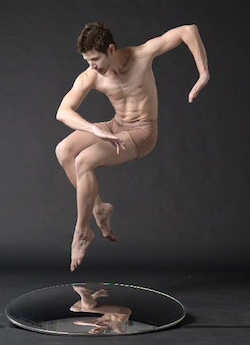
Billy Blanken has lived and danced in NYC since 2005. Photo by Lois Greenfield.
8. You are okay getting around without a car.
It is possible to have a car in NYC, but with that come some inconveniences: parking, traffic, high insurance rates. Most people use the public transportation – subways, buses and even ferries – to get around. For just a couple of dollars, you can get from one borough to the next.
The subway, however, is sometimes unreliable, especially on the weekends, late at night or on holidays, so sometimes you must allow for extra travel time.
“It can be very exhausting to take the subways and walk everywhere you go,” Wendler comments. “You also have to be able to calculate your time all day long.”
Blanken adds, “Think of it like this: If you have a car that happens to be full of things that you need on a daily basis, in New York, those things you will more than likely be carrying in person at all times, in the snow and ice, and your umbrella just broke, and the train is late, and there is a long line to check into class, which you will have to leave early because rehearsal is in Brooklyn, and besides, there is a sub and you didn’t know and you checked online before you left but now you are here, and the L train is always screwed up, but you can’t remember if it is this weekend, too, so maybe you should just get a coffee instead, but you got this far so you should take class.”
9. You’re okay with extreme seasons.
In NYC, winters are cold and summers are hot, sometimes on the extreme of either end. Since a lot of time is spent outside, walking place to place, or walking to the subway, you have to be weather-ready. A small umbrella kept in your bag daily doesn’t hurt either.
10. You want a challenging, but ultimately rewarding, experience.
NYC can be a trying, tiring place to live, but its richness in culture and dance opportunities also make it an inspiring, rewarding place to call home. If you’ve always wanted to live in the Big Apple or wonder what it’d be like, give it a try.
“Since my move, I am absolutely positive that this was the right move,” Wendler says. “My career has grown, my dancing has grown, and you definitely grow as a person living in NYC.”
“It has been challenging,” Bufferd adds, “but the rewards of it always outweigh the negative. I strongly recommend going for it! There’s a reason those shirts say ‘I Love New York’. There is really no place like it.”
By Laura Di Orio of Dance Informa.
Top Photo © Phakimata | Dreamstime.com – Broadway At Times Square By Night Photo


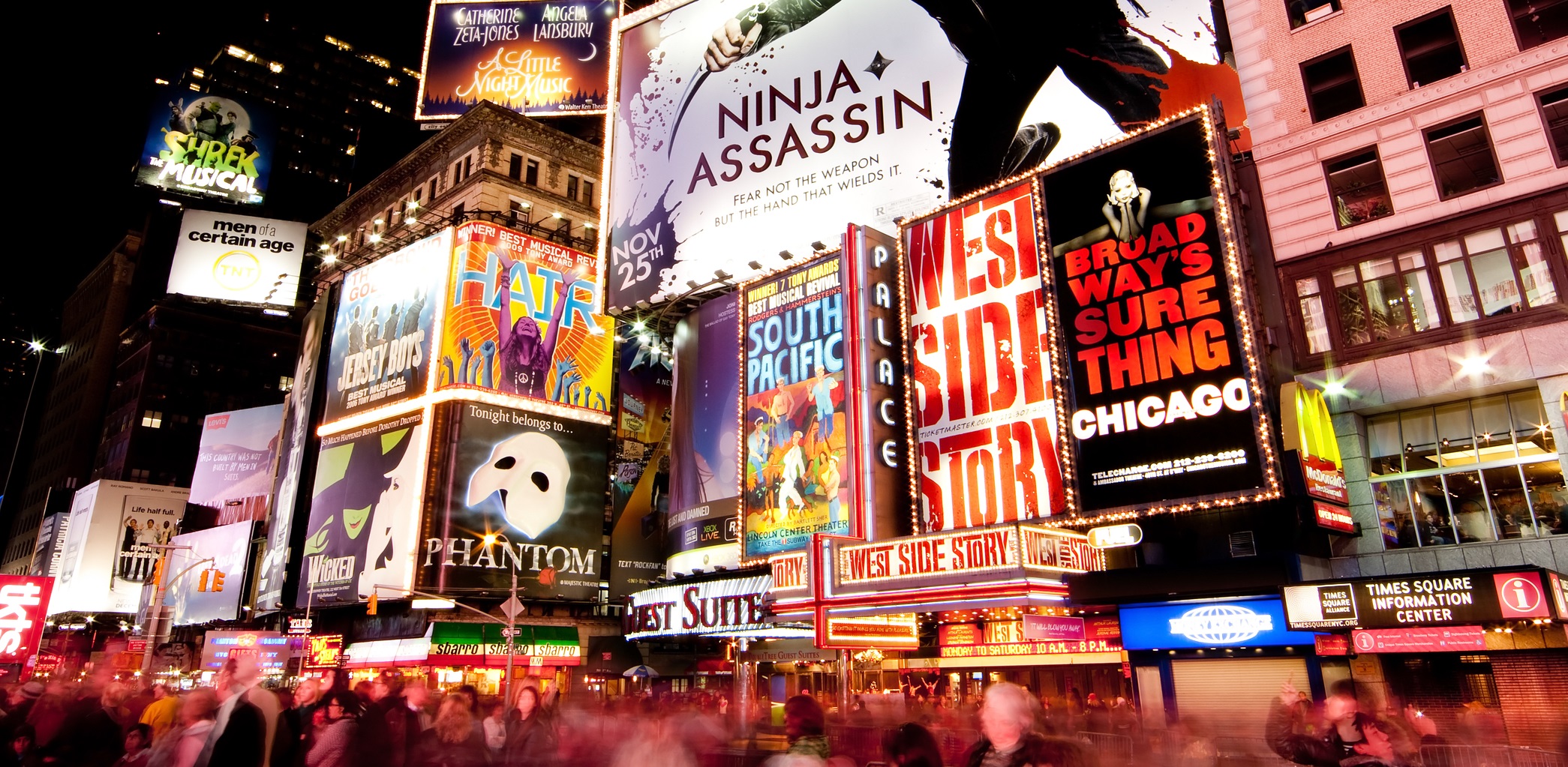





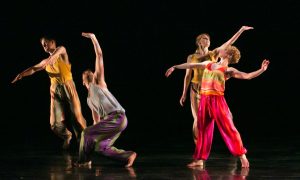







Pingback: NYC: To Move or Not to Move? - Dance Life